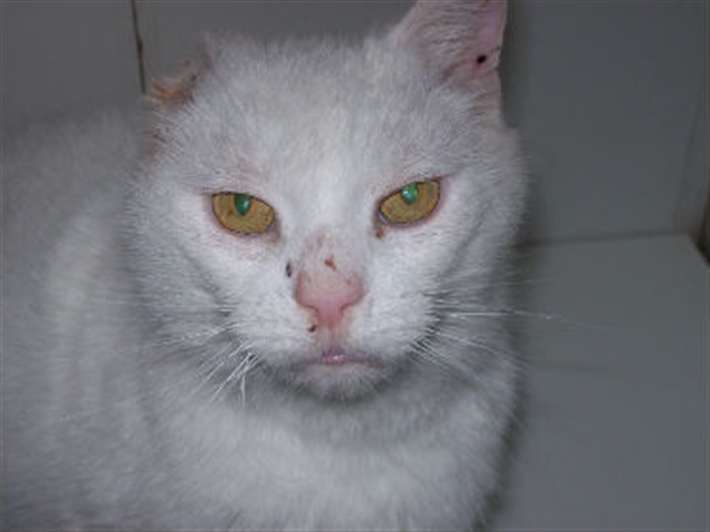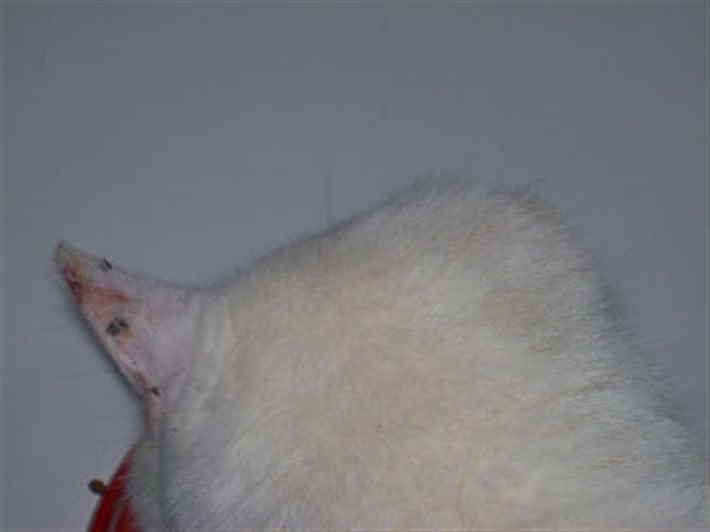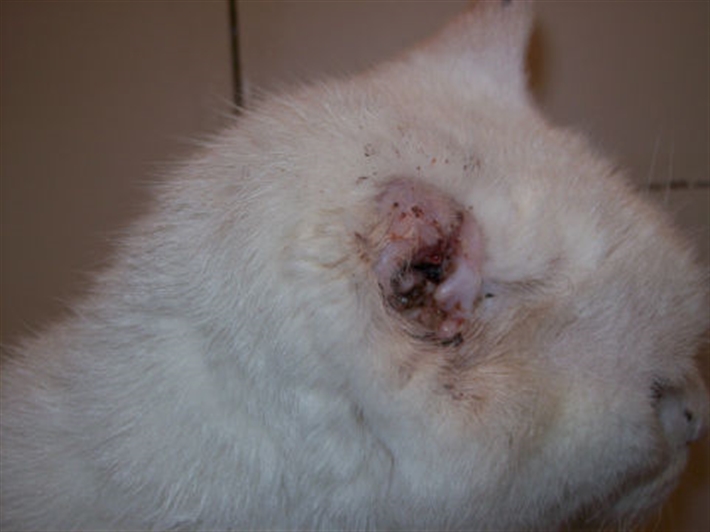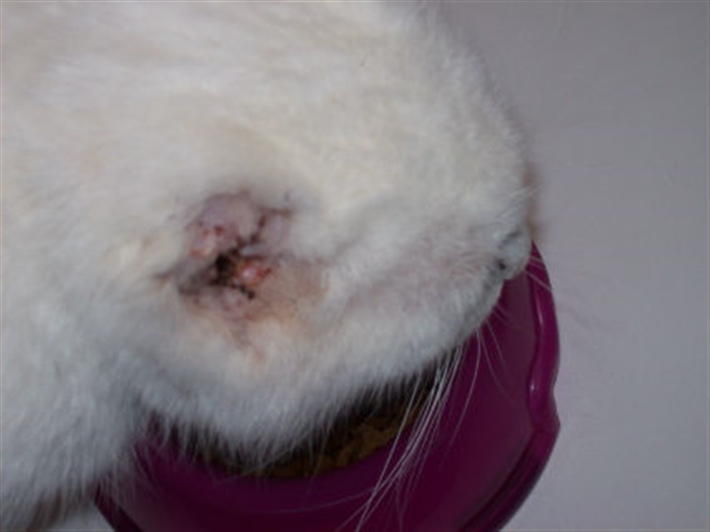SQUAMOUS CELL CARCINOMA
At last, summer has arrived!!!
 There is a down side to this though, and that is the danger to cats from carcinomas. Just like us, white cats, pale coloured cats and some coloured cats (those with white tips to ears and pink noses) are susceptible to the harmful UV rays from sunlight due to the lack of pigment (melanin). Most cats, as any cat owner will tell you, are sun worshippers and can lie in the sun most of the day without any damage to their skin at all. However, white, part white and cats who have a sparse covering of hair can suffer from skin damage, which, if left untreated can develop into squamous cell carcinoma.
There is a down side to this though, and that is the danger to cats from carcinomas. Just like us, white cats, pale coloured cats and some coloured cats (those with white tips to ears and pink noses) are susceptible to the harmful UV rays from sunlight due to the lack of pigment (melanin). Most cats, as any cat owner will tell you, are sun worshippers and can lie in the sun most of the day without any damage to their skin at all. However, white, part white and cats who have a sparse covering of hair can suffer from skin damage, which, if left untreated can develop into squamous cell carcinoma.
The areas affected, and therefore, those which should be checked are ear flaps (pinnae), nose and eyelids.
Signs to look for:

Usually begins as a pink area with some scaling and hair loss. If exposure continues, the skin can then become seriously crusted, and if left untreated it is likely that squamous cell carcinoma will develop. Signs to look for of squamous cell carcinoma of the nose, frequently appear as a nasty ulcer that may bleed spontaneously.

As with all cancers, catching it early is the key to recovery, but the best way is prevention. We all know that preventing a cat from lying in the sun is difficult but precautions can be taken such as limiting the time the cat is in the sun, particularly at the hottest time of the day and by using sun block (please check with your vet what type to use on your cat).

If your cat is already in the pre-cancerous stages (first appearance of changes to skin colour and appearance of crustiness on tips of ears, eyelids and nose) a visit to the vet is essential so that treatment can begin. Early intervention is the key to successful treatment.
The pictures show Casper, a cat who sadly wasn’t protected from the sun’s harmful rays, and, despite his pinna (visible part of ear) being removed, the cancer had spread as you can see from the huge swelling on the right side of his head, he also had the beginnings of cell changes to his left ear.
ALWAYS SEEK YOUR VETERINARY SURGEON’S ADVICE IN THE FIRST INSTANCE
Bibliography
www.icatcare.org
Veterinary Notes for Cat Owners by Trevor Turner BVetMed,MRCVS and Jean Turner VN